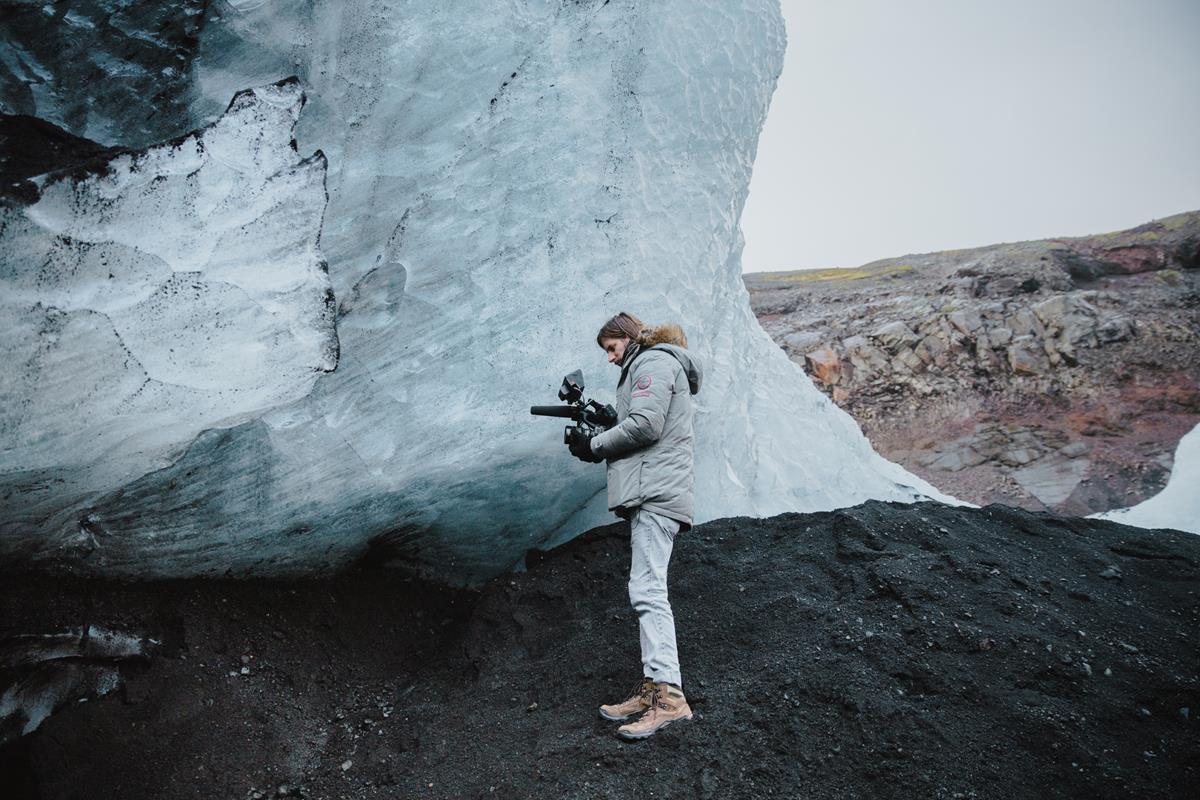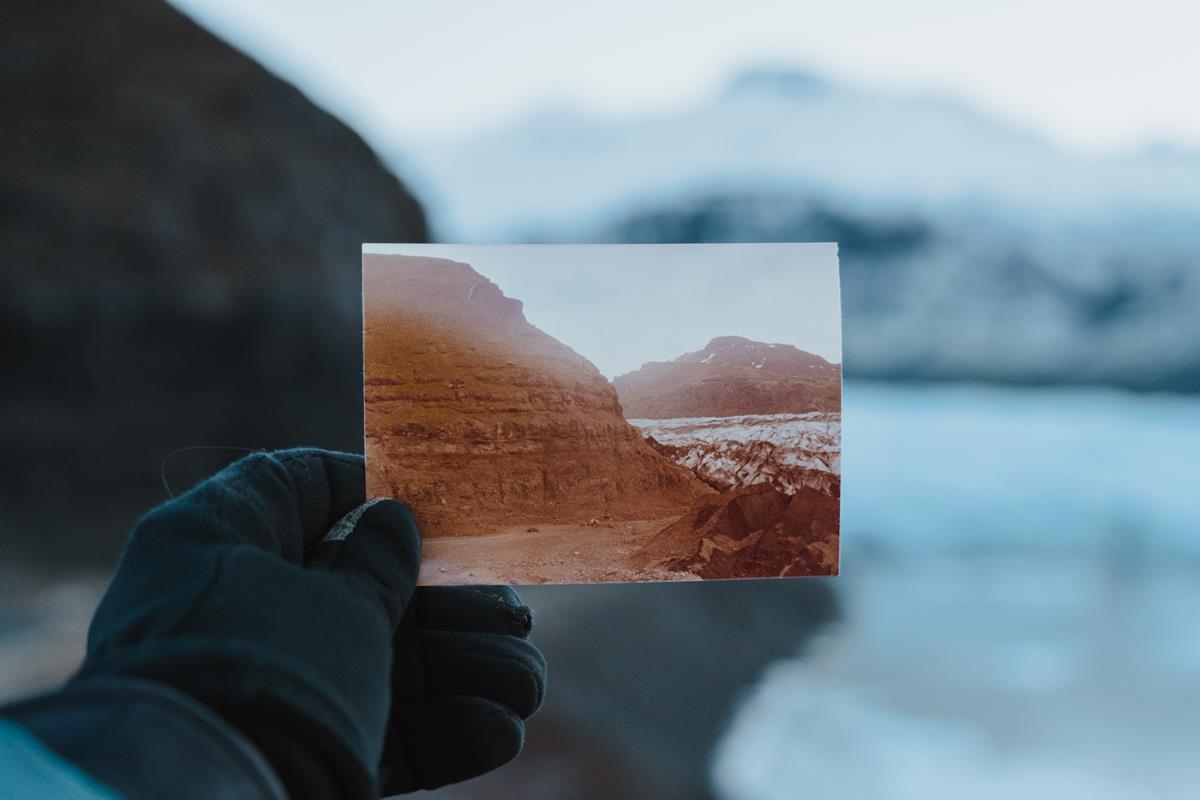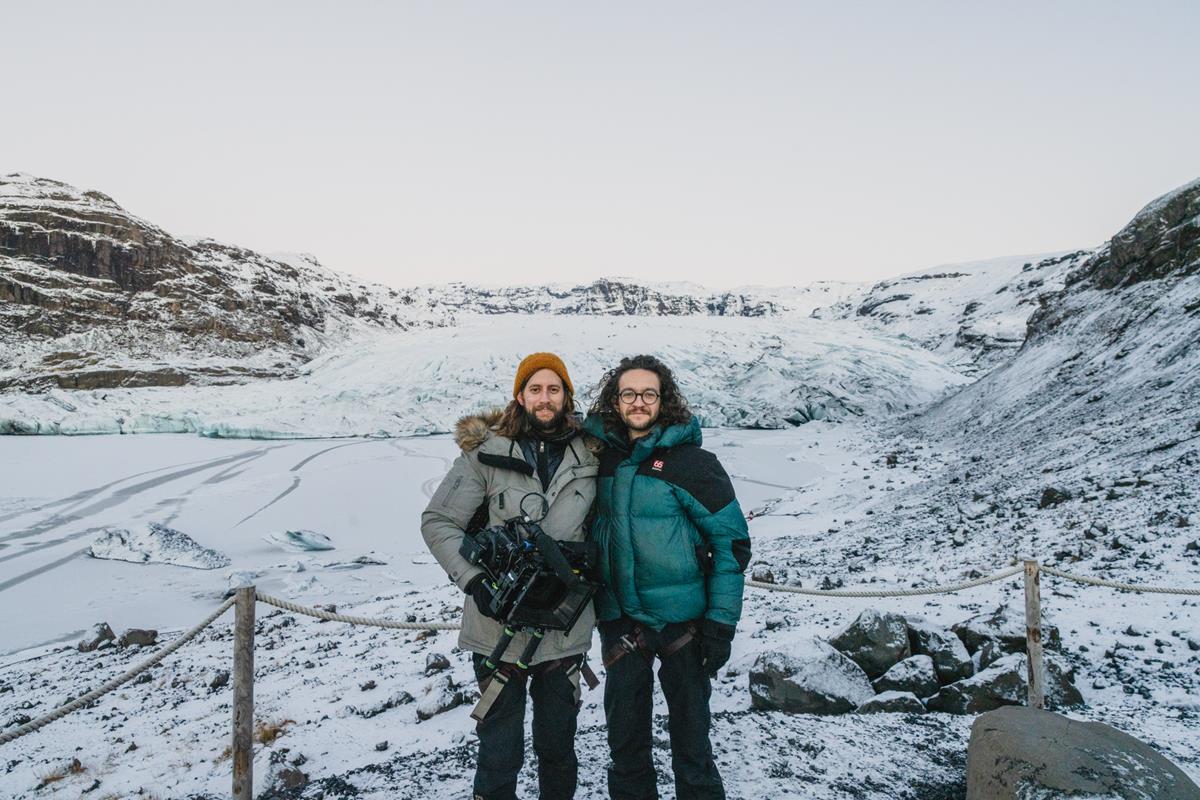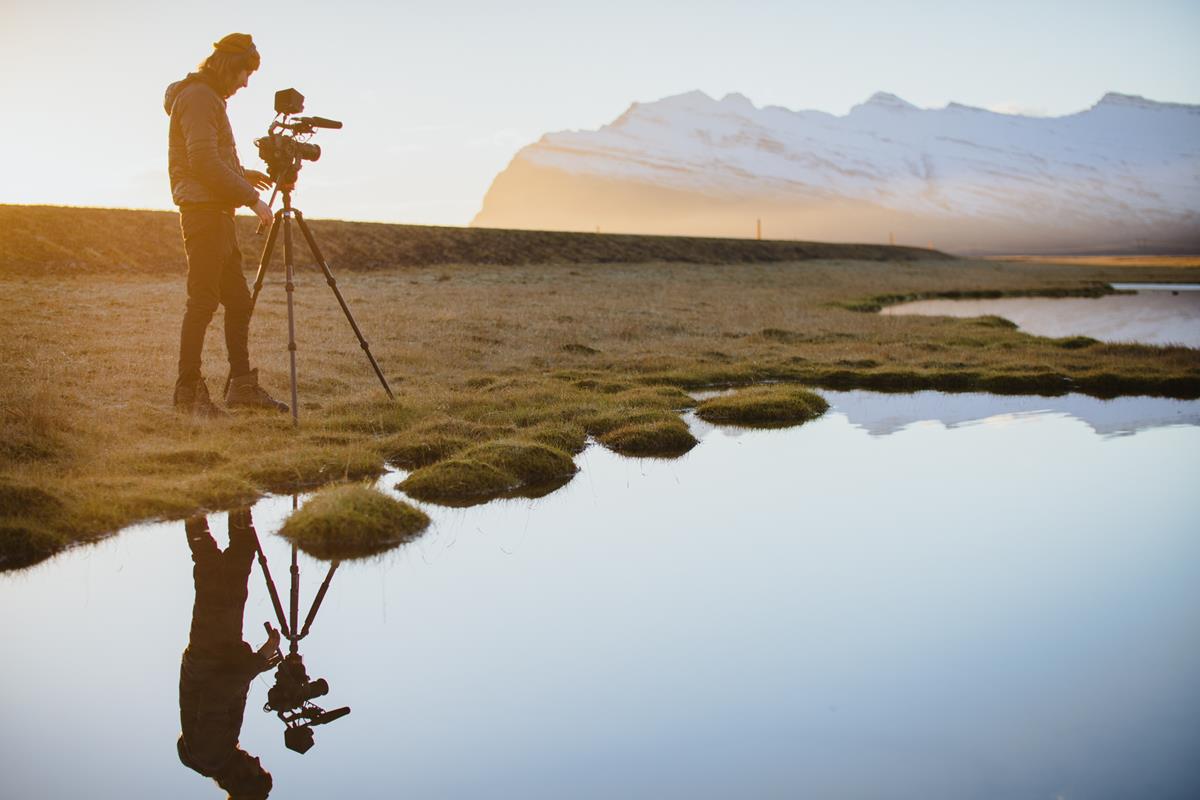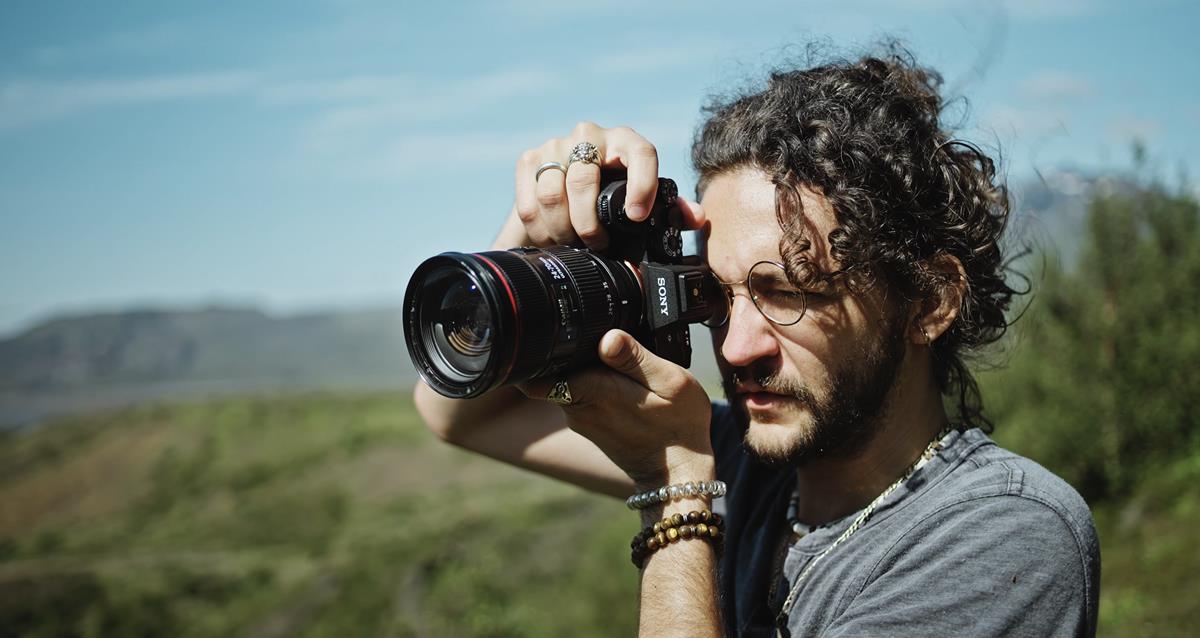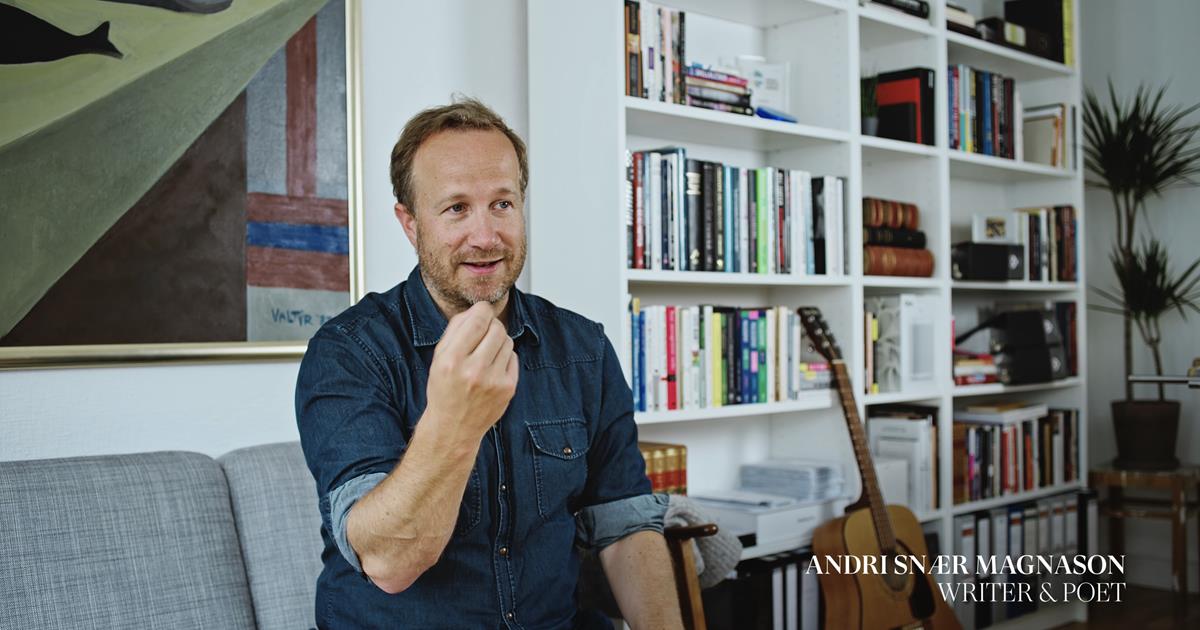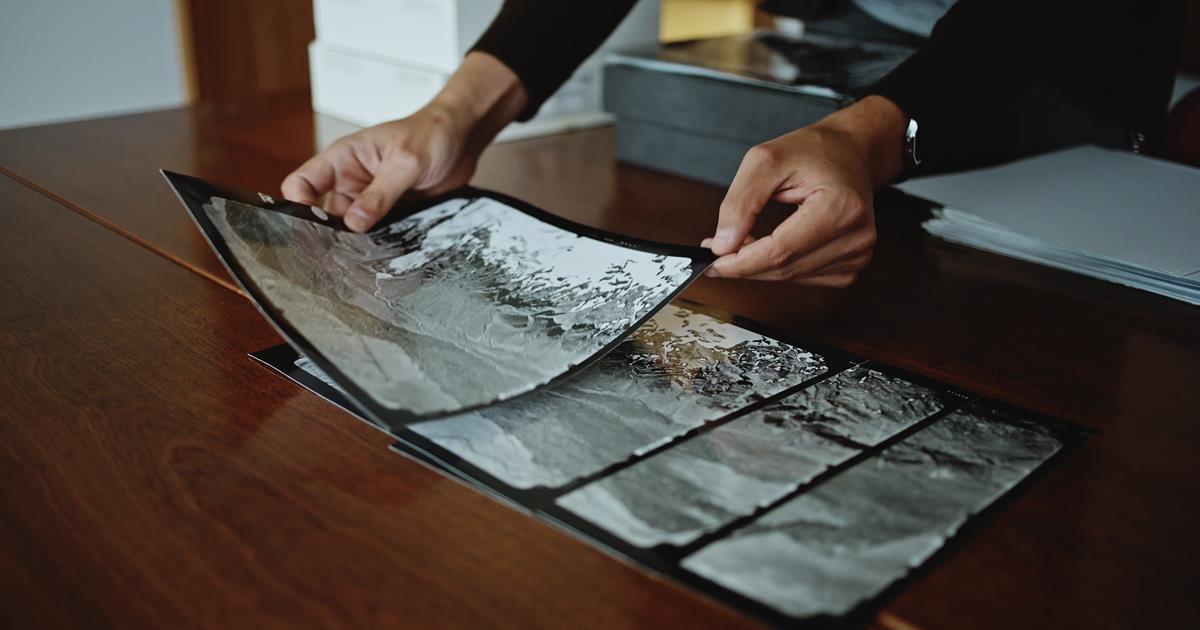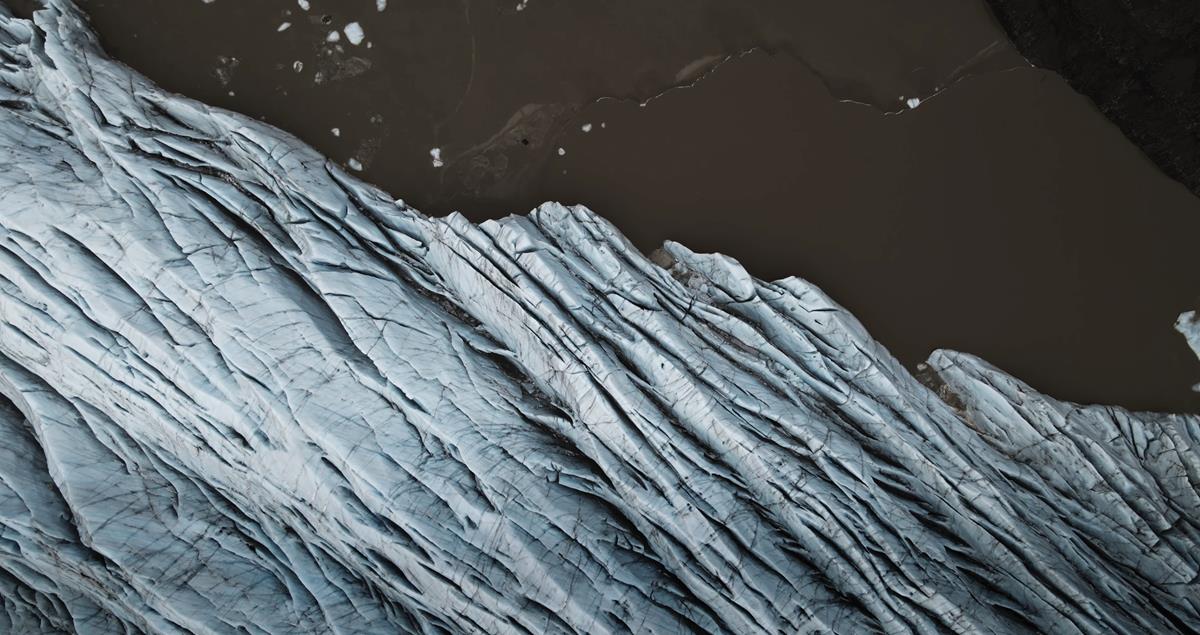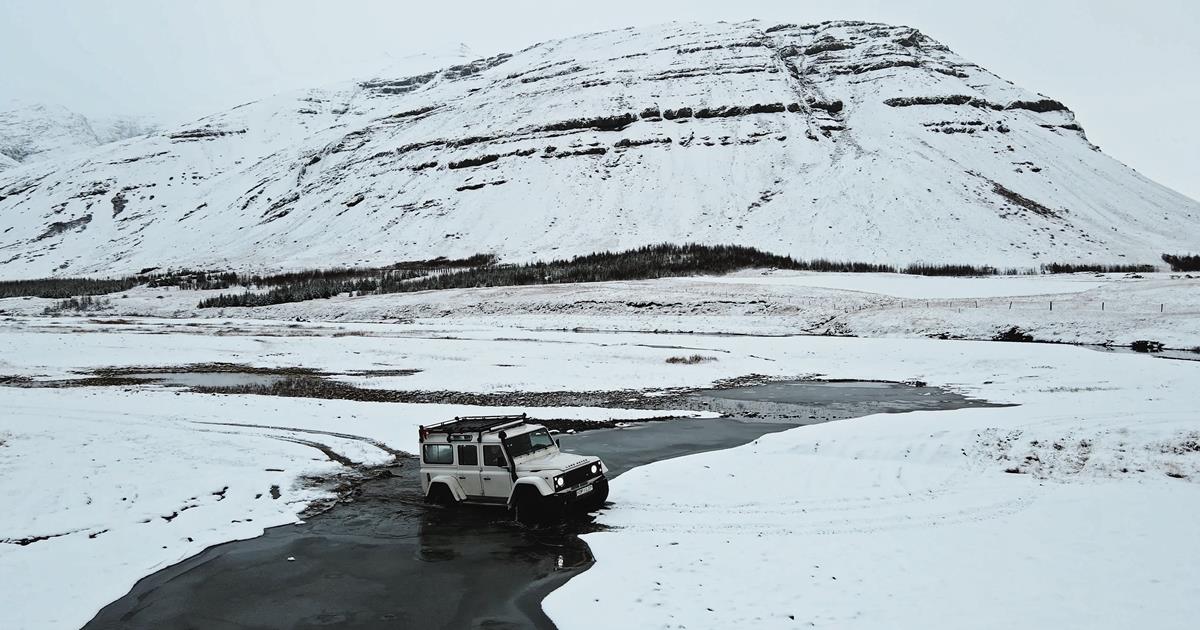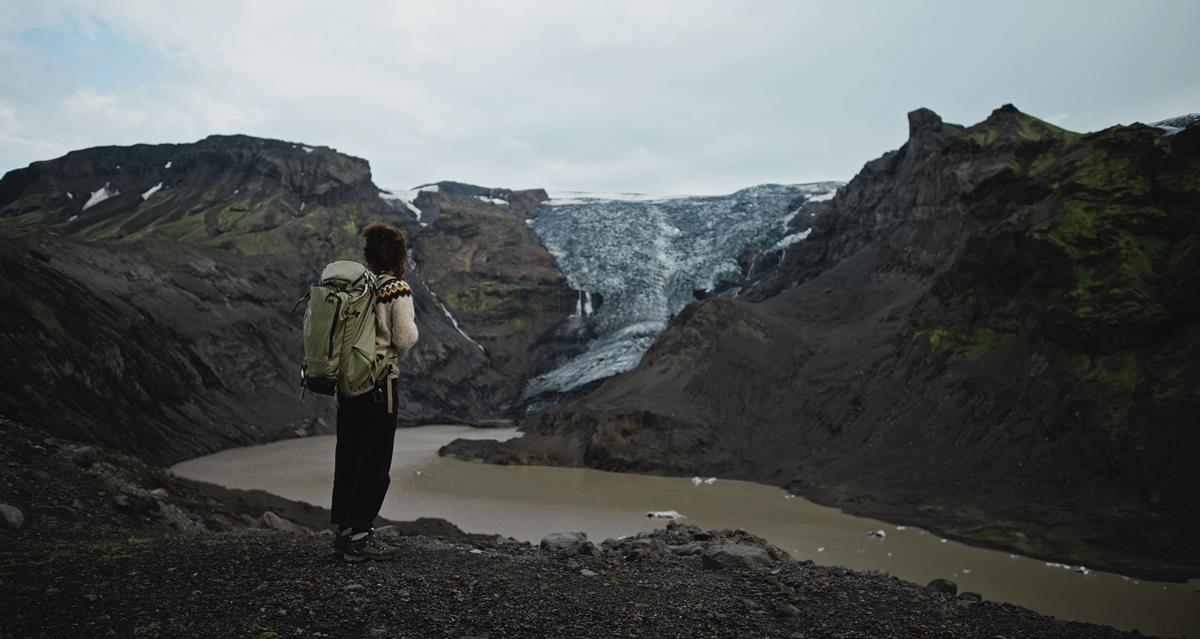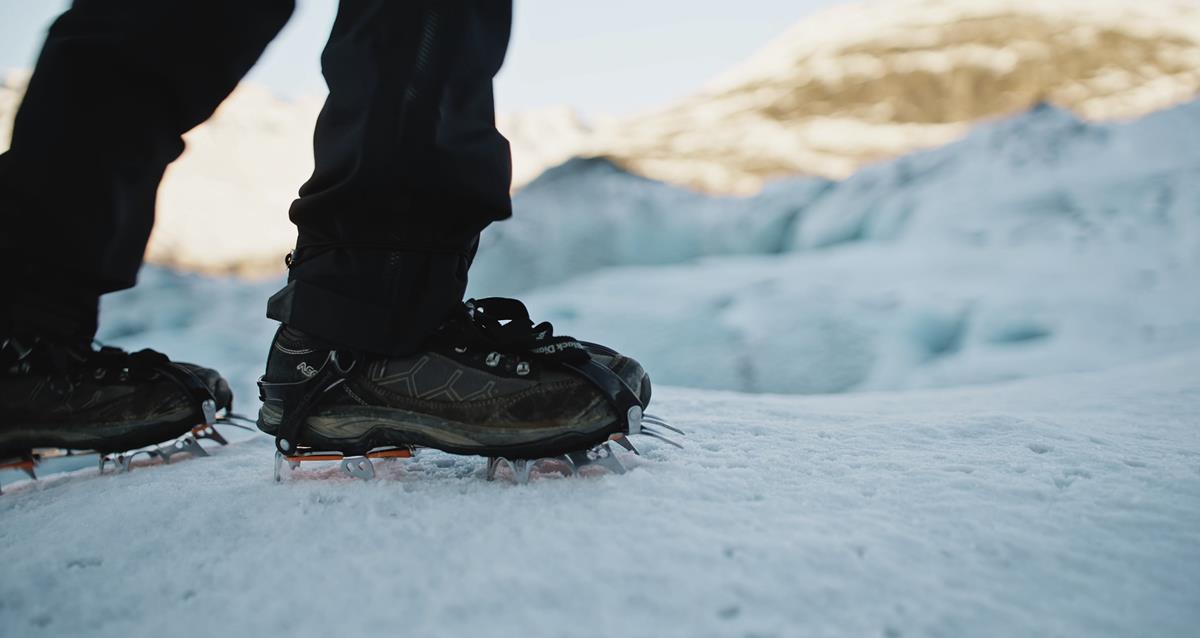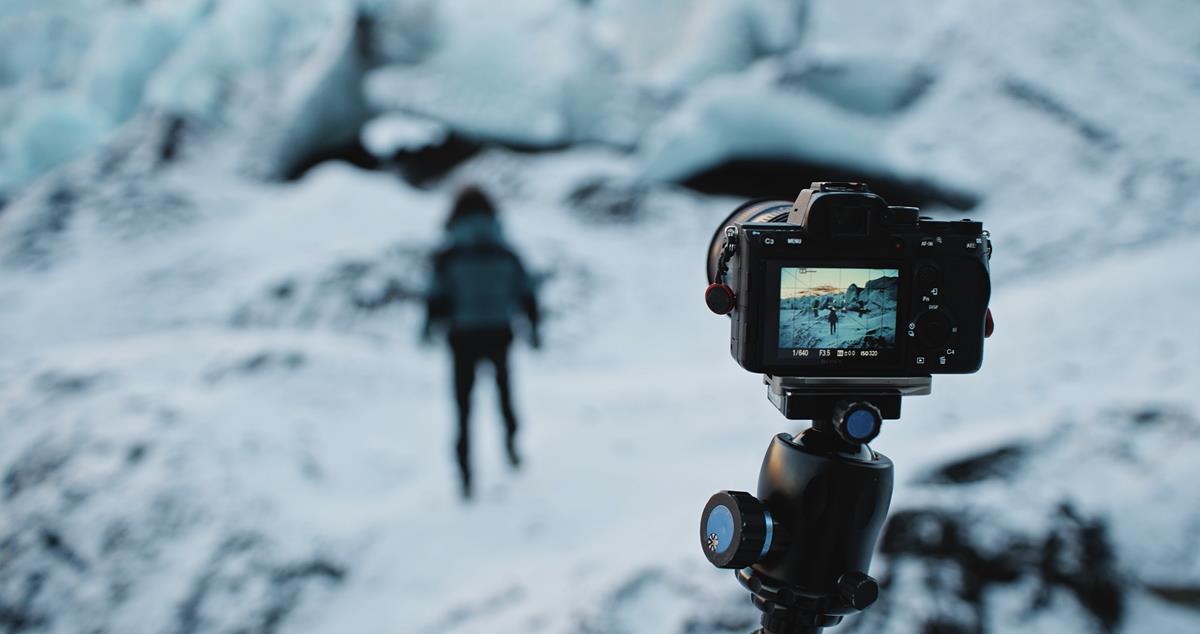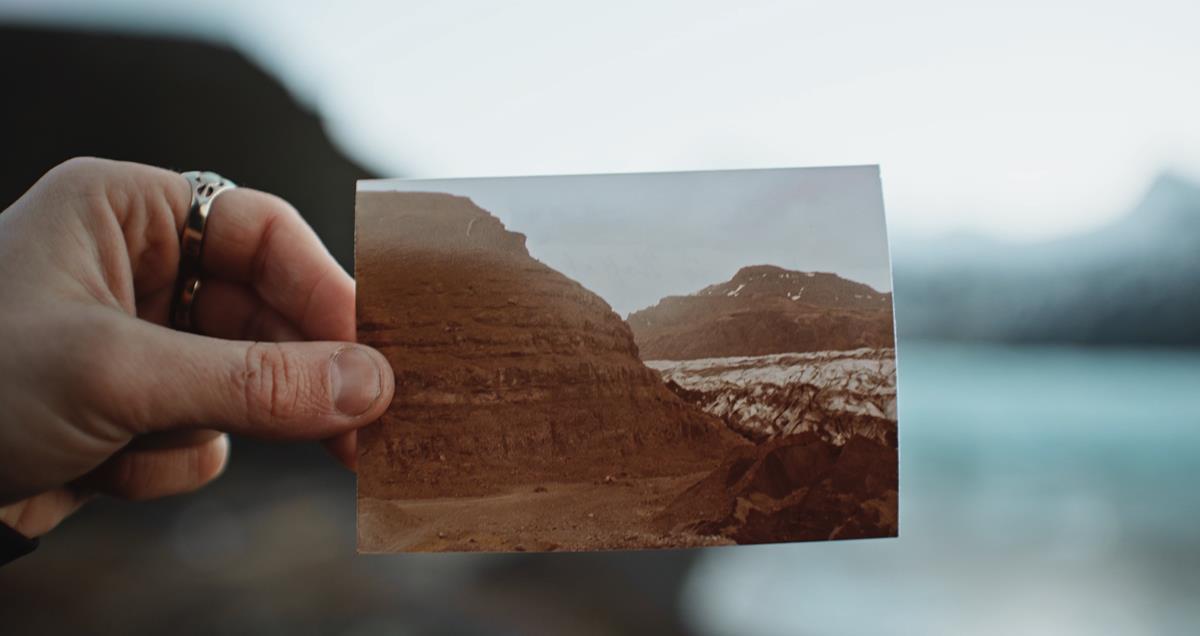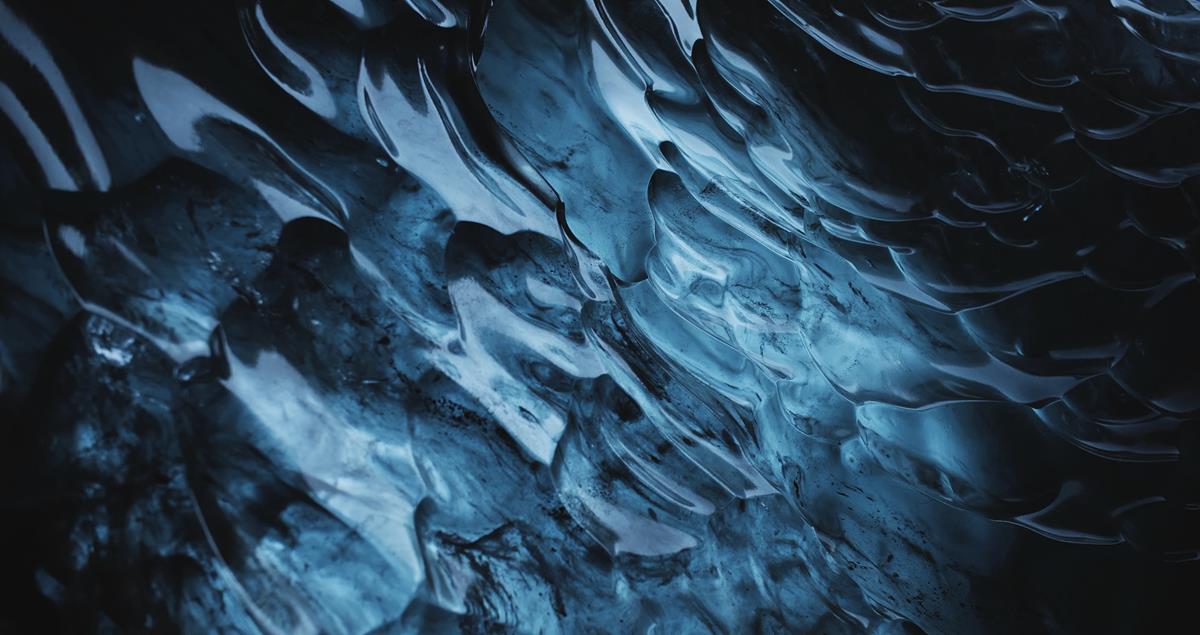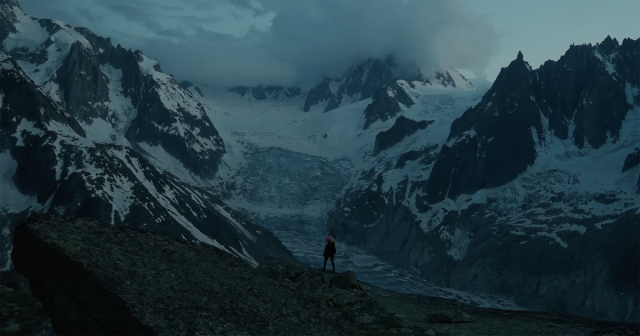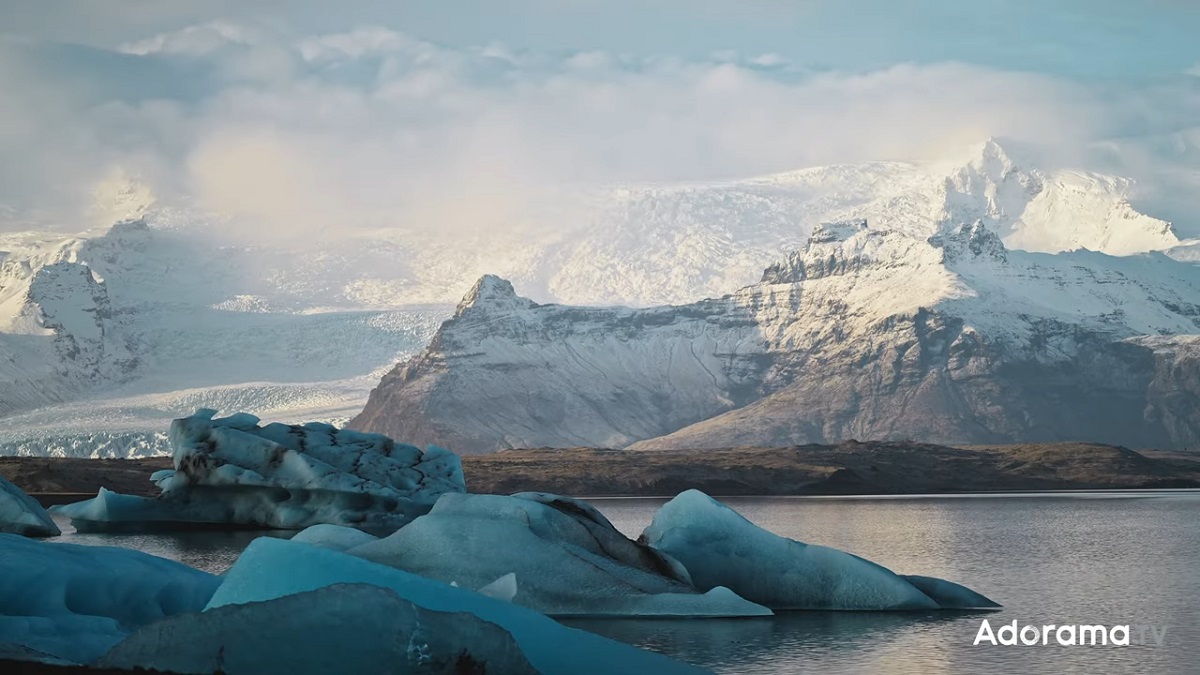
TL;DR
- Donal Boyd and Frank Nieuwenhuis shot climate change documentary “In a State of Change” in order to help personalize the impacts of receding glaciers in Iceland.
- The documentary short film was shot by Nieuwenhuis primarily using the Sony FX6, which was ideal for a production that frequently required packing light.
- In addition to being a second shooter and drone operator, Boyd served as the main character anchoring the documentary, which he found uncomfortable but ultimately effective.
Many documentary filmmakers can relate to their aspirations not aligning with the story they ultimately tell. Such was the case for Donal Boyd and Frank Nieuwenhuis, who sought to help people understand the impact of climate change, on both Iceland’s glaciers and on Icelanders themselves.
“We had to look for something new to get people to connect to this story of the landscape changing, in essence, to understand the larger issue of climate change,” Boyd says in the first of a four-part video interview about the making of In a State of Change.
Ultimately, he says, “The idea was to, maybe, make people more fall in love with the glaciers through what we would show.”
Initially, Boyd was inspired by Andri Snær Magnason’s On Time and Water, which explores why people don’t understand climate change or connect with the issues surrounding it. As a photographer advocating for climate change awareness, Boyd says the themes resonated and motivated him to connect with Nieuwenhuis to partner on a documentary about Iceland’s changing glaciers. (Boyd and Nieuwenhuis previously collaborated on Volcano for the People.)
They didn’t set out to have Boyd serve as the main character in the film, but Nieuwenhuis says, “It definitely helped us to navigate through the different things and connect everything. Because it was also very interesting to see that development of yours through the film.”
Boyd admits, “I changed just as the same landscape is changing.” He adds, “I hope that people will relate to the struggles that I went through.”
Using a Lightweight “Beautiful Rig”
In a State of Change was primarily filmed on the Sony FX6, which Nieuwenhuis calls a “beautiful rig” in part two. He says, “It’s lightweight, and it’s also very like run-and-gun type of camera. This is exactly what we needed and wanted for this project.”
After all, “Being out in the field, climbing up on mountains, you don’t want it to be too heavy. You want to be able to unpack it and quickly film,” Nieuwenhuis explains. The FX6 has “XLR inputs built in, and ND filters built in, so I can strip this whole thing down and I could still film.”
In terms of glass, Nieuwenhuis opted for cinema prime lenses, specifically the digital film kit from Vespid. Keeping with the theme of packing light, he notes that they are both very small and relative featherweights. But that’s not the only reason he chose them. “They’re beautiful. I love to work with them. We have a kit with the 25, the 35, the 50 and the 75,” he says.
The 35 mm is a favorite of Nieuwenhuis, and he says, “I also like to go to 25, which is really nice. When you have very open aperture lenses, especially on the full frame, it gives a lot of bokeh, even though you go white. I prefer to go wide because you get a lot of context in your scene.”
Their secondary cameras were the Sony Alpha I and the Sony Alpha 7SIII, which Boyd says they paired with Vespid primes for a second angle during interviews.
Also in their kit is an external HD monitor. Nieuwenhuis says, “ I like to have a big monitor” because “it just gives me a lot more confidence.”
One of the heaviest items in their pack is “a big V-lock battery. That does add a lot of weight. But it allows me to power up everything from one battery,” he explains. But that heft had an advantage: “It also helped me balance this rig, because the camera is so light. Without the V-lock battery in the back it would, like, tilt forward just because… the lens is even heavier than the camera, almost.”
For audio, Nieuwenhuis says the opted for lavalier mics, including a Sennheiser wireless set that Boyd wore almost constantly because they filmed without a dedicated “audio guy” and that meant no boom pole when he was on camera, unless it was during a sit-down interview.
The boom mic did make an appearance, however. “When we were out in the field, running and gunning, we did put the boom mic on top of the camera. This allowed us to record anything or anyone that wasn’t miked up with a wireless lav mic. So for example, when we were bumping into people on the hiking trail, and we wanted to have a little, you know, spontaneous conversation with them, we could just capture it on camera,” Nieuwenhuis recalls.
For indoor interviews, Nieuwenhuis relied on a “beautiful aperture 300 DS, available with a softbox just to make some soft light” to correct some of what he called “terrible” lighting situations.
Because the nature of In a State of Change, Nieuwenhuis says, is “very focused on landscapes, we needed an aerial very wide perspective that would give us a proper view to give us an idea of the whole landscape. And there’s nothing better than seeing it from the air.” To capture that footage, they opted for a DJI Mavic Air 2, primarily piloted by Boyd, who Nieuwenhuis credits as an excellent drone operator.
Capturing Scenes Under Difficult Conditions
For the human elements of the documentary, Boyd and Nieuwenhuis wanted to “create scenes rather than interviews.” Nieuwenhuis explains in part three.
Boyd elaborates, “Instead of giving too much context for anyone that we spoke to, when we had them sit in our chair, or when we got them out in the field, we gave them just enough to give an idea of what our general film was about. But we wanted to capture the authenticity, and the reactions in the conversations that we’re having out in the field, or during the interview itself.”
But in creating those scenes, Boyd explains, they had to factor in “access and the weather” — the nature of filming in Iceland.
In terms of access, their Land Rover Defenders (which Boyd calls “a super Jeep) came in handy repeatedly. Additionally, the pair rented an RV to serve as mobile studio and hotel, in order to avoid “going up and down to these glaciers. We would lose too much time. We would miss opportunities.”
Boyd says, “Having this mobile studio allowed us to not be dependent on the location where we might have booked a hotel. Or if we were staying in Reykjavik, it’s just too far to come back and forth from that.”
The RV also meant, Nieuwenhuis says they “started editing during the process of filming. And it helped us, in a way, to lead us through the story and react on what we captured. Sometimes, you know, we captured something and realized with a switch of direction or something inspired us.”
Despite the access and weather concerns, Boyd says, “The greatest challenge was actually wrapping up the entire film together in the end, and creating a cohesive story.”
Some of that cohesion was developed in post by a sound designer and a graphic artist. They employed musicians to create a custom soundtrack, and the graphic designer was tasked with developing “the vibe and overall look,” Boyd says.
The project lasted about a year, longer than they had initially planned. “At some point, we realized we have something beautiful here. Let’s not rush this,” Boyd recalls.
What They Learned
The first scene of the documentary features a glacier-carved canyon. “We could really imagine that we’re standing in the spot where the glacier used to be,” Nieuwenhuis says during part four of the Q&A.
Equally importantly, this scene, he says, created “a moment where we started seeing more of [Boyd] as a character, rather than a presenter. We start to see your emotions come through.”
Boyd admits, “It felt weird, you know, to incorporate myself as a character into the film.” Also challenging for Boyd was the need “to overcome” his fixation “on aesthetic and on beauty” during filming.
Both, Boyd says, learned they “have to be narrow and focused, keeping things personal, but also trying to be as objective and taking the advice of all the people that we incorporated into the film together, as one, to get the message across.”
For his part, Nieuwenhuis says he discovered that “it’s much more interesting when you put a person in an environment, so it can respond to the environment; it can interact with the environment.” He says, that decision “actually makes the process of… telling a visual story… much easier.” After all, “It’s not a radio show.”
In a State of Change also taught Boyd “the power of collaboration and incorporating already existing ideas and combining them to be able to communicate such a difficult issue.” He explains, “If you have an idea or a concept, you don’t have to just do it by yourself, but you can work with other people to remix it and reinvent it and get the message across in a more powerful way.”


